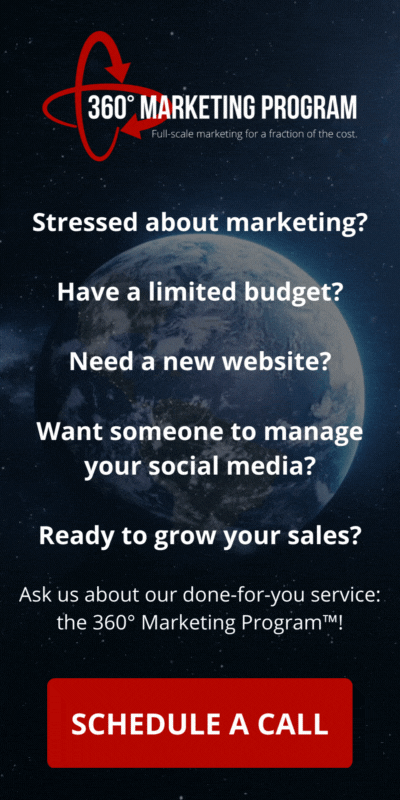Whether you’re launching a new business or just rebranding your current one, you should keep in mind several key components of effective branding strategies.
Many times, small brand changes will make an enormous difference in your marketing efforts, but sometimes these changes need to be big to make a difference. Below, we’ll outline some of the most important things to think about when it comes to branding your business.
What are you trying to say?
The very first thing you want to do is answer the first subconscious question that pops in everyone’s mind when they first encounter your business:
What does your business offer?
Every strategic marketer knows that in order to be effective in your marketing efforts, you need to answer this question in as many ways as possible without even saying a word.
For instance, if your business specifically sells shoes to athletes, your logo might be a graphic of a soccer cleat with wind rushing past it, and then the name of your business next to it in bold italics.
That’s obvious to most people – if your business is called Athletic Footwear Co., more than likely it’s going to explain itself. However, if you’re putting your logo on various marketing channels (business cards, on stadium banners, bumper stickers, etc.) then creating a logo that conveys the message for you makes your job a lot easier.
Save money. Grow online.
Learn what our 360° Marketing Program can do for your company to help you grow your business online!
Color Psychology
There have been decades of research performed around how visual elements that we see every day affect our behaviors.
One of the most important to take into consideration – and the element that affects all of your marketing and branding content – is color. Use the chart provided below to get an idea of what each color represents, and decide what colors would best represent your brand.
Remember: you should only choose up to three colors as a standard rule.
Designing Your Logo
If you’re a DIY kind of person, then this is something that you definitely need to spend time and energy developing.
A logo is not just words and shapes – it subconsciously sends a message to consumers about what you do and the quality behind your brand.
Your business logo is a concept that, if done properly, will not only stand the test of time but also associate memory and the senses by just a quick glance at your logo.
For instance, when you think of “golden arches”, what comes to mind?
That’s right – McDonald’s.
What about a swooping check mark and the phrase, “Just Do It”?
Nike.
The point here is that we are inundated with logos every single day that we go about our daily lives, consumed by the internet’s vast array of information and advertising. There’s nothing inherently wrong with this of course; in fact, it proves that there is room in this world for your business.
There are millions of brands out there, but only a handful are big corporations. Take the time to learn from them and design a logo that speaks to what your business does for its customers.
When you design your logo, you should have, at minimum, four versions: one will be a horizontal colored version, and its colored counterpart will be a square to be used for social media pages and the like; the last two will be a transparent black version and a transparent white version of your horizontal logo, usually placed in your website footer, over video presentations, and other applications of your marketing.
Advertisement & Design
Young people go to school for branding and design for a very good reason:
It’s not just about being creative. It’s about sending a message.
If you look at the different advertisements put out by companies on Facebook, you’ll find that more often than not their videos and graphics are matched in color and style.
One company may have a “modern” look, with sharp angles and abstract shapes in its designs, while another takes advantage of classic designs from the 1800’s as a source of creative inspiration.
It all depends on what message you want to get across. (It bears repeating, as messaging is absolutely critical.)
Call To Action vs. Brand Awareness
In the advertising world, there are only two ways to present your brand:
Ask the viewers to do something (click a button, go to a website, call a phone number, etc.) or simply to provide useful information that makes the audience ask, “Who designed this and presented it to me?” subconsciously.
There’s a fantastic book by Gary Vaynerchuk called Jab, Jab, Jab, Right Hook that explains the dichotomy between these two concepts perfectly. Find a used copy of the book – it might even be available at your library – or download a digital copy on Kindle. It’s not an expensive book at all, but the concepts provided within will earn you dividends from the time you finish the book to when you take Gary’s advice into consideration.
Branding Is The Key To Success
While many entreprenuers simply jump into doing business, they miss a critical part of their business image by not taking the time to brand what they do properly.
Disregarding your brand image is like going to a wedding in a soccer outfit after your team lost and you had three glasses of whiskey before stumbling into the church. Everyone else has donned their finest suits and dresses, but you decided that you’d look a mess simply because you didn’t care…even if you truly loved the couple getting married and cared deeply about them.
The thing to remember is this:
People WILL judge you based on your looks – it’s just human nature. Sometimes we do it consciously, but most of the time, it’s just an automatic function of our minds.
Human beings love to spend the least amount of their resources (i.e., money) and get as much value as they can from their efforts in as little time as possible. In other words, if you’re hungry for a burger but you’re in a hurry, you’re going to go with the well-branded company that serves cheeseburgers for a dollar. Oh, and you can just order it from your car instead of sitting down at a nice restaurant and spending five times the amount.
So, whatever kind of message your business puts out will be largely, if not entirely, determined by how you choose to brand your business.


